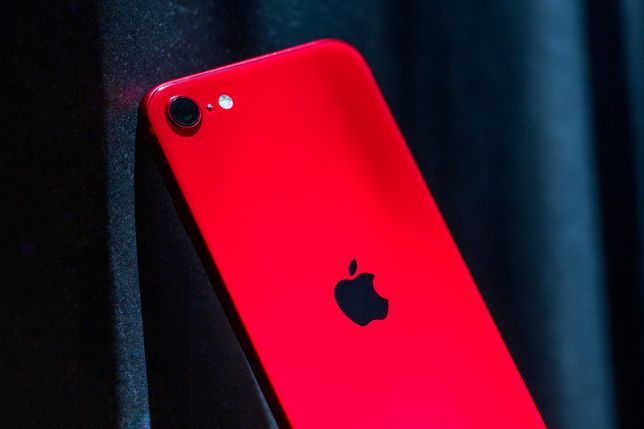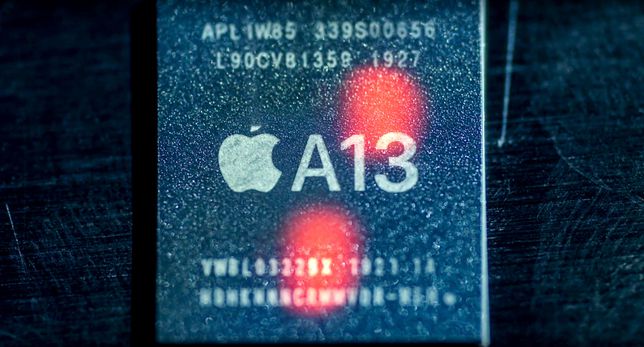iPhone SE vs. iPhone 11: Here's what you get (and don't get) for the price
As the sequel to Apple's 2016 sleeper-hit iPhone of the same name, the new iPhone SE starts at $399, £419 or AU$749. With that price tag, the phone aims to court budget-minded users who may not be able to splurge on $1,000 handsets like the iPhone 11 Pro or Galaxy S20. While that does mean some cuts in hardware (the phone has a smaller 4.7-inch display and a single rear camera, for example) the iPhone SE does include some modern fixings, such as the same A13 processor as the iPhone 11 phones.
Need more specifics? Here's an in-depth walk-through of how these two models differ so you can learn what exactly the iPhone SE offers at its lower price.
Size and design: iPhone SE is small and compact
The most obvious difference between the two phones is that the iPhone 11 is larger. The iPhone 11 has a 6.1-inch screen while the iPhone SE has a 4.7-inch display. While you get more screen real estate for your apps and watching videos with the former, the iPhone SE will draw users for its comfortable portability and compact grip.
Both iPhones have LCD displays, but the iPhone 11 has a "Liquid Retina HD display" while the iPhone SE has "Retina HD." These are branding terms that Apple uses to differentiate its display technology; all you have to know, though, is that the iPhone 11's screen is sharper, although they both have the same number of pixels-per-inch or pixel density.
 iPhone SE vs. iPhone 11: Here's what you get (and don't get) for the price Picture 1
iPhone SE vs. iPhone 11: Here's what you get (and don't get) for the price Picture 1 Some users will also like the iPhone SE's home button. Now that Apple is discontinuing the iPhone 8, the iPhone SE will be the only iPhone Apple will sell with a physical home button. In addition to being intuitive to use, it also means you don't have to use swipe gestures to return to the home screen or call up recent apps. The home button will also house the device's fingerprint reader for unlocking the phone and authorizing digital payments (what Apple calls Touch ID). The iPhone 11, however, uses facial mapping sensors on the front-facing camera for biometric security (aka Face ID).
The devices are both IP certified for water protection. But because the iPhone 11 is rated IP68 compared to the iPhone SE's IP67 rating, it means that the iPhone 11 is a tad more durable against submersion (as in, it's certified to withstand longer or deeper immersion in water). On paper, an IP67 level of certification means the iPhone SE can survive in up to a meter (3.3 feet) of water for about 30 minutes.
Lastly, the iPhone SE only comes in black, white and red. The iPhone 11 comes in those three colors, too, but if you want more options, you can also get it in pastel yellow, green and purple.
Camera: iPhone 11 has the upper hand
If you're not necessarily a camera power user, the iPhone SE's single 12-megapixel rear camera should suffice for posting images on Instagram and casual video recording. But if you care about photography or want more tools at your disposal, the iPhone 11 has a notably better camera setup than the iPhone SE.
The iPhone 11, for instance, has a second wide-angle camera. That means you can take sweeping landscape photos or creative, more dramatic pictures at close distances. The iPhone 11 also has Apple's low-light camera mode, Night Mode. Night Mode reduces things like digital artifacts, graininess and motion blur to capture and brighten up images taken in dim lighting.
As for the front-facing camera, the iPhone 11 doesn't just have a better selfie camera because it has more megapixels (12 megapixels compared to the iPhone SE's 7 megapixels). It can capture 4K video (compared to the iPhone SE's 1080p video) and record slow-motion video, too.
Processor and battery: Both have A13 Bionic
As its main budget phone, Apple could have outfitted the iPhone SE with an older processor. But the device is equipped with the latest proprietary A13 Bionic chip, the same one that's inside the iPhone 11. When we ran processing performance speeds on 3DMark and Geekbench 5, both phones clocked in similar results, which is also to say that the iPhone SE performed comparably -- and at times better than -- the Galaxy S20, Pixel 4 and the OnePlus 8 Pro.
 iPhone SE vs. iPhone 11: Here's what you get (and don't get) for the price Picture 2
iPhone SE vs. iPhone 11: Here's what you get (and don't get) for the price Picture 2 As always, Apple doesn't disclose the iPhone SE's battery capacity. According to the run times listed on Apple's site, the iPhone SE's battery is similar to that of the iPhone 8, which isn't as long as the iPhone 11. (Unofficial tear-downs from third parties also revealed that the iPhone 11 has a 3,110-mAh battery while the iPhone 8 has a 1,821-mAh battery.)
When we ran continuous video playback on Airplane mode, however, both phones lasted the same: about 15 and a half hours, give or take. While we have yet to run streaming tests on the iPhone SE, it's promising that the first set of battery runs are similar to the iPhone 11.
iPhone SE (2020) vs. iPhone 11
Apple iPhone SE (2020)iPhone 11Display size, resolution4.7-inch Retina HD; 1,334x750 pixels 6.1-inch LCD Liquid Retina; 1,792x828 pixelsPixel density326ppi 326ppiDimensions (inches)5.45 x 2.65 x 0.29 in. 5.94x2.98x0.33 in.Dimensions (millimeters)138.4 x 67.3 x 7.3mm 150.9x75.7x8.3mmWeight (ounces, grams)5.22 oz.; 148g 6.84 oz.; 194gMobile softwareiOS 13 iOS 13Camera12-megapixel 12-megapixel (wide), 12-megapixel (ultrawide)Front-facing camera7-megapixel 12-megapixelVideo capture4K 4KProcessorApple A13 Bionic Apple A13 BionicStorage64GB, 128GB, 256GB 64GB, 128GB, 256GBRAMNot disclosed Not disclosedExpandable storageNo NoBatteryNot disclosed Not disclosedFingerprint sensorHome button NoConnectorLightning LightningHeadphone jackNo NoSpecial featuresWater resistant (IP67); dual-SIM capabilities (nano-SIM and e-SIM); wireless charging Water resistant (IP68); dual-SIM capabilities (nano-SIM and e-SIM); wireless chargingPrice off-contract (USD)$399 (64GB), $449 (128GB), $549 (256GB) $699 (64GB), $749 (128GB), $849 (256GB)Price (GBP)£419 (64GB), £469 (128GB), £569 (256GB) £729 (64GB), £779 (128GB), £879 (256GB)Price (AUD)AU$749 (64GB), AU$829 (128GB), AU$999 (256GB) AU$1,199 (64GB), AU$1,279 (128GB), AU$1,449 (256GB)
You should read it
- New iPhone SE: 9 things to do right after you unbox it
- iPhone SE vs. iPhone X: Don't buy that refurbished phone just yet
- Is Apple making an iPhone 9 or SE 2? Every rumor, including specs and launch date
- How to Use Headphones on iPhone 7
- Basic instructions for using iPhone 6, iPhone 6 Plus
- Apple to open up orders for new entry-level iPhone as early as Friday, says report
- iPhone 6 is not yet available but Apple has prepared a chip for iPhone 7
- How to identify the most accurate and fake iPhone headphones
- iPhone SE: Every spec, rumor and the expected launch date
- iPhone SE: Every spec, rumor and the launch date
- Apple will buy back the old iPhone in Vietnam?
- Apple again sells iPhone SE again - Starting today
May be interested

iPhone SE vs. iPhone X: Don't buy that refurbished phone just yet

iPhone 11 Pro vs. OnePlus 8 Pro cameras compared: See the photos side by side

6 things to never do during Zoom or other video chat calls

Motorola Razr with 5G is reportedly dropping in September

Galaxy Note 20: Juiciest camera rumors, photo leaks, release date and more

Google Pixel 4A and 4A XL rumors are heating up. Here's everything we've heard





 New iPhone Xs, Xs max and Xr prices are released by Apple
New iPhone Xs, Xs max and Xr prices are released by Apple Price list of new iPhones, current latest iPhone prices
Price list of new iPhones, current latest iPhone prices iPhone 12: Summary of known information about the upcoming Apple phone
iPhone 12: Summary of known information about the upcoming Apple phone Price of iPhone 9 will only from 399USD
Price of iPhone 9 will only from 399USD Apple raised the repair price of iPhone 6 and iPhone 6 Plus
Apple raised the repair price of iPhone 6 and iPhone 6 Plus Cheapest used iPhone price on the market: iPhone 11, iPhone 12 Pro Max, iPhone 13 Pro Max are the cheapest ever, the most surprising is the price
Cheapest used iPhone price on the market: iPhone 11, iPhone 12 Pro Max, iPhone 13 Pro Max are the cheapest ever, the most surprising is the price